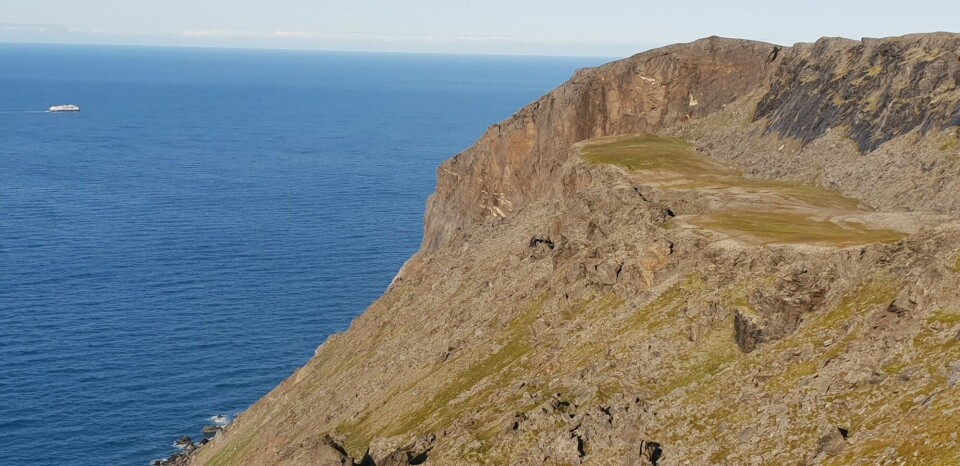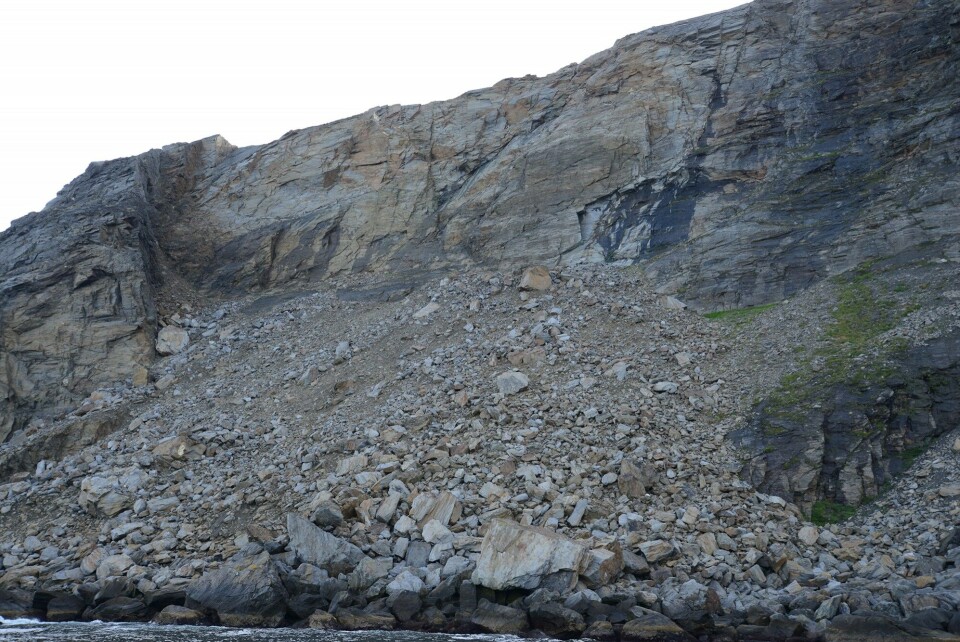
Rockslides in the Arctic: Why do we care?
Global climate warming is most severe in the Arctic. One consequence is a widespread reduction in permafrost. Continuous, stable permafrost can act as a physical glue that helps anchor unstable slopes. Increasingly, scientists are reporting collapse of rock slopes in the High Arctic.
By: Reginald L Hermanns, Thomas F Redfield and Ivanna M Penna // NGU – The Geological Survey of Norway
The Arctic is sparsely populated. Most rockslides caused by loss of permafrost go unnoticed. But when they are sudden and close to settlements, these events can make it into local, national, or even international news. For example, 300 000 cubic metres of fragile sedimentary rocks slid into Svalbard’s Isfjorden on 12 August 2016. The rockslide originated from a much larger rock slope instability at Forkastningsfjellet, some 10 kilometres north of Longyearbyen. The slide caused no damage, and no displacement wave was observed in Longyearbyen harbour. Nevertheless, coastal Arctic rockslides can potentially be very dangerous. A rockslide at Karat, Greenland, entered the fjord on 17 June 2017, causing a displacement wave. Although the rockslide was some 30 kilometres from the village of Nuugaatsiaq, the wave it caused was over 10 metres high and took the lives of four persons.
Why is the number of reports growing?
The increasing availability of new data makes it easier to detect rock slope failures. By comparing historic aerial photos from 1976 and 2007, scientists from the Geological Survey of Norway (NGU) identified the scarp from a rock slope failure on the east side of Porsangerfjorden. The slide is estimated to have had a volume of about 1 000 000 cubic metres of bedrock. Searching for eyewitnesses in the nearby harbour of Honningsvåg, we met Alfred Karlsen. Karlsen recalled that the event occurred in autumn 1986 or 1987. He had been about two nautical miles away from the slide, and rode out the 7-to-8-metre-high waves caused by the impact in his fishing boat Morning Star . Public awareness has risen since then: such an event would have been big news today.

Does climate warming contribute?
We know from dating of deposits and from mapping fjord infill that rock slope failure activity was much higher during the two millennia after deglaciation in Norway than it is today. Our research also indicates rock slope failure also occurred at the 1300-metre-high unstable rock slope of the mountain called Mannen about 5000 years ago, at the end of the Holocene Climate Optimum. This was the warmest period after deglaciation, and permafrost models indicate that permafrost had disappeared at that site at that time, suggesting degrading permafrost as a contributing, or even causative, factor.
The dating of rockslide scars in northern and western Norway with cosmogenic isotopes (isotopes created when cosmic rays interact with atoms on Earth) also helps us to better understand long-term deformation of rock slopes.
First results show two groups of rock slope deformation, initiated in different eras. One group started moving after deglaciation. The second became active during or at the end of the Holocene Climate Optimum, when permafrost was reduced. A cause for worry at several sites is that today’s sliding rates are faster than the long-term millennial average. Because rock temperatures have been rising since the Little Ice Age, we may be identifying a climatic control of slip rates. This is also indicated by a statistical analysis of the more than 500 unstable rock slopes that are registered in the unstable rock slope data base at NGU.
More than a hundred of them were recognised on InSAR data shortly after the data became public in 2018 (www.insar.ngu.no). The Reinbenkan rockslide is one example. Data show that the vast majority of rockslides that have higher velocities today occur within areas where the permafrost is sporadic or discontinuous.

Life in the Arctic will inevitably change in the coming decades. By the end of this century, the Arctic Ocean is expected to have a very reduced sea ice cover. In the most extreme case, it will be virtually ice-free. Northern shipping routes crossing the Arctic Ocean are 25% shorter than those currently connecting Europe and Asia, and thus less costly. A growing tourist industry will also increase human presence in the Arctic and the Arctic Ocean. Increased presence means increased exposure to rockslides and the dangers they pose. This highlights the need for better understanding of the linkage between rock slope stability and climate-driven permafrost degradation.
In the High Arctic, field parties have begun pilot projects to assess potential rockslide threats in Svalbard and Greenland. These projects have been carried out by scientists from Norwegian, Danish, and German geological surveys, and we intend to collaborate further in the future. We hope that additional studies will soon help make the Arctic safer for travellers and residents. As Benjamin Franklin said: “You may delay, but time will not.” And William Shakespeare would have agreed: “Better three hours too soon than a minute too late!”
This story is orignally published by the Fram Forum
















